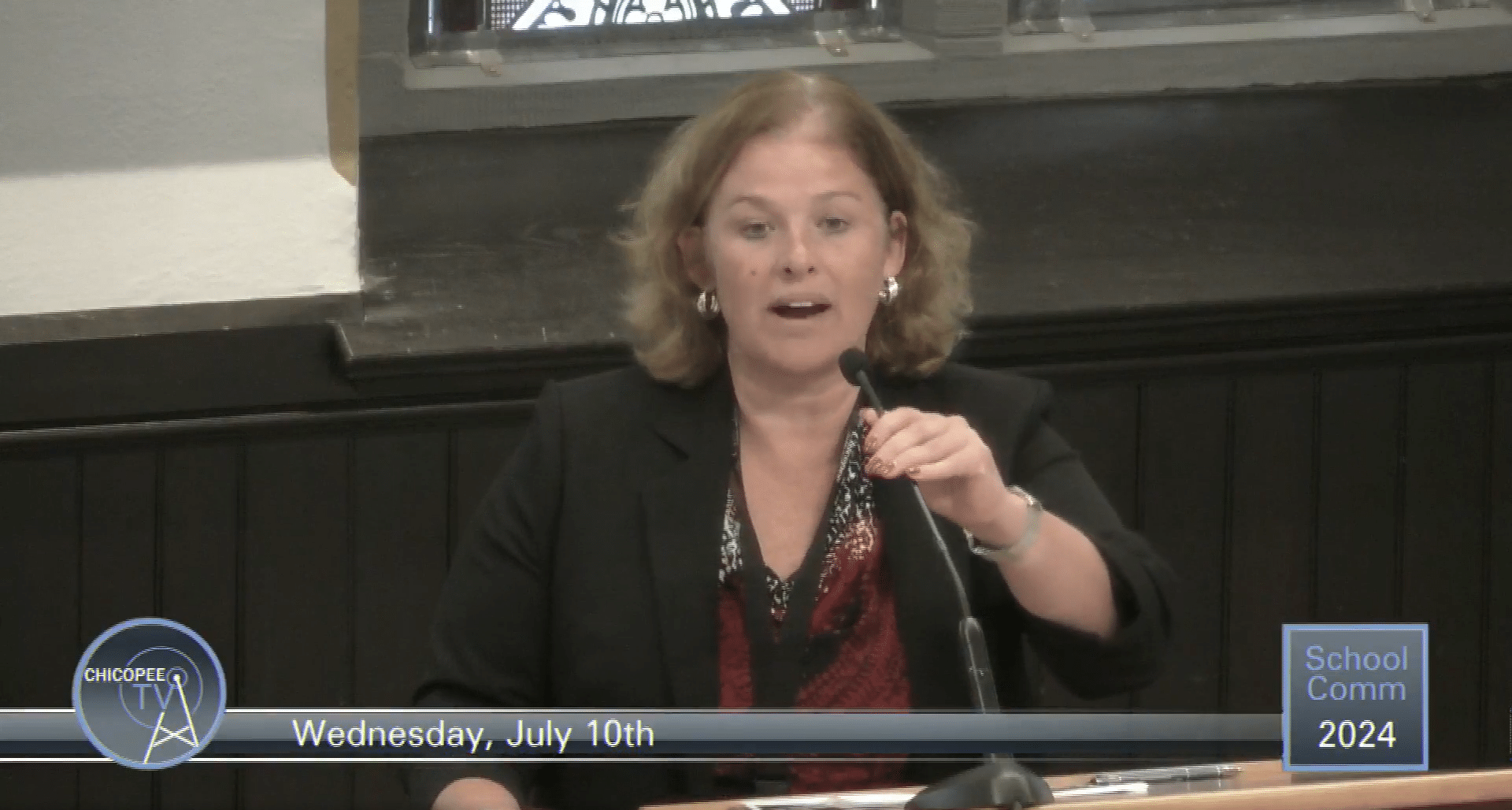Assistant Superintendent Jennifer Bellville discusses an update to the district during the July 10 School Committee meeting.
Reminder Publishing screen capture by Tyler Garnet
CHICOPEE — Assistant Superintendent of Instruction and Accountability Jennifer Bellville met with the School Committee at its July 10 meeting to discuss an update regarding things going on within her office and the district.
Chicopee High School and Chicopee Comprehensive High School were both chosen by the Department of Elementary and Secondary Education to receive visits from the state.
Bellville explained why these schools were chosen for progress monitoring reports.
She said, “We were chosen specifically by DESE from the subsectors. There are many departments under the major department and that department is the Center for School and District Partnership. A few times this year I have referenced SSOS, which is the statewide system of support so the Center for School and District Partnership, one of their fractions is the statewide system of support and because we get that support, we were luckily chosen to have some visitors come.”
Each visit presented a comprehensive report for each school based on a site visit with multiple classroom observations, instructional staff and administration surveys, student surveys and assessment results.
The company that conducted the visits was the American Institute for Research and Bellville said they were looking for strengths and areas for growth across effective instruction practices and resources, student-specific supports and access, the learning environment and data-driven progress monitoring.
Bellville said that she and her team looked at the reports but were given a message about them.
She said, “We were told specifically to use this as a pragmatic tool. This is not a definitive verdict. This is not saying our school is underperforming, our school isn’t doing this, this is an opportunity for us to look at for growth as well as what are we doing well.”
At Chicopee High School, there were 12 indicators that AIR looked at. They are all related to organizational practices, structures and/or processes.
There was also a four-point rating scale. One is an initial rating, two is emerging, three is established and four is robust and sustainable.
At Chicopee High School, there were three initial ratings with high expectations, safe and supportive and sense of belonging for students.
Bellville said this rating means they didn’t see evidence or saw limited evidence of implementation.
The last nine indicators there rated as emerging to show they are planned or starting to be implemented but are not fully developed. The indicators they looked at included effective instructional practices, high quality instructional materials, equitable access, tiered system of supports, English learners, students with disabilities, continuous improvement and data systems.
Bellville said some key takeaways from the report were focused on the communication around expectations, the student experience for its students and culture of staff and students.
She added, “One of the biggest things we did was the district administration met with the high school administration and we really dove into this report and looked at it as an opportunity of what are we going to do we these results. They felt that one of the biggest things that Chicopee High School as struggled with is the clear outline of the roles and responsibilities of the administration.”
Chicopee Comprehensive High School had similar results in their report.
Out of the 12 indicators, CCHS received one rating on initial in tiered support systems.
“Interesting as we met with the Chicopee Comp. administration, they do have some tiered levels of systems of support but what we also found is that there is a great deal of breakdown in the communication around what they are and how do you access them.”
Ten of the remaining indicators received a rating of two or emerging and the data systems received a rating of established.
“This was not surprising to me as Chicopee Comp. has a very strong data team. They have used data significantly and its part of their process.”
CCHS rendered the same key takeaways and action steps from their report.
Bellville said that when her and her team met with the CCHS administration, they already started to establish an action plan to talk about.
She added, “As we talked about that action plan, we really realized that there was some communication issues, that there wasn’t a common language around sometimes special education and what those accommodations and the modifications should look like or what supports were in place for students and how do we access that.”



